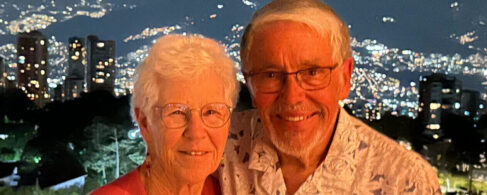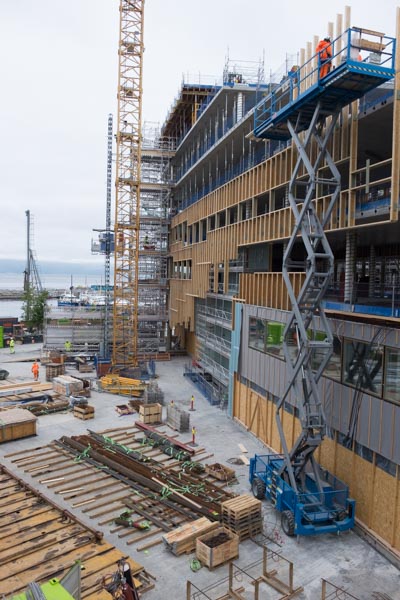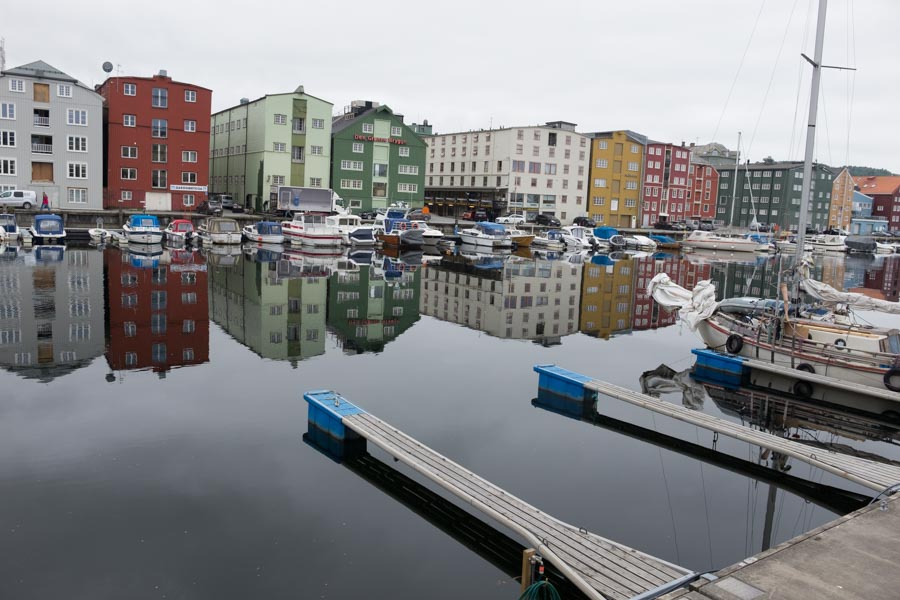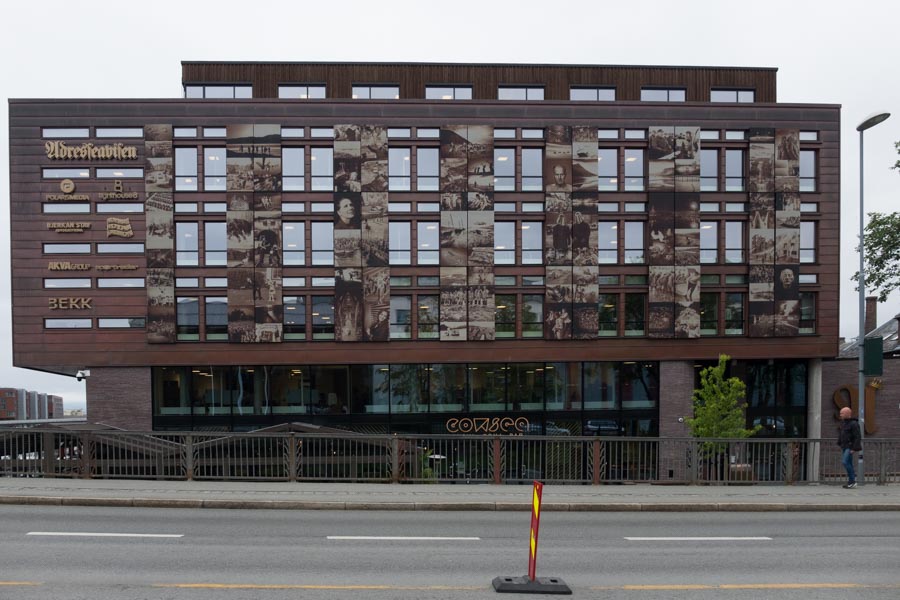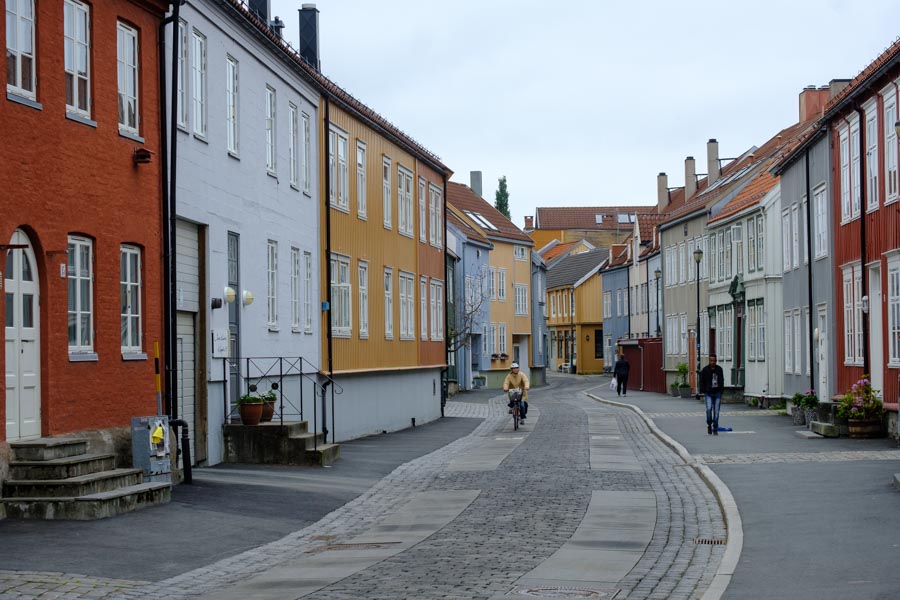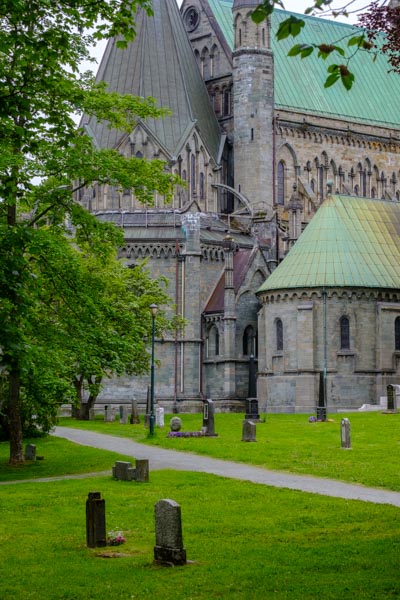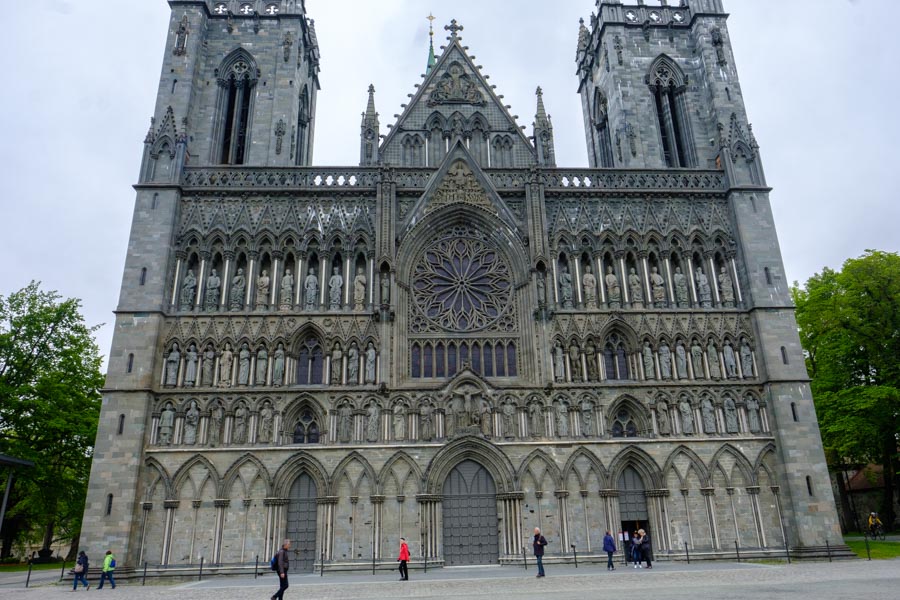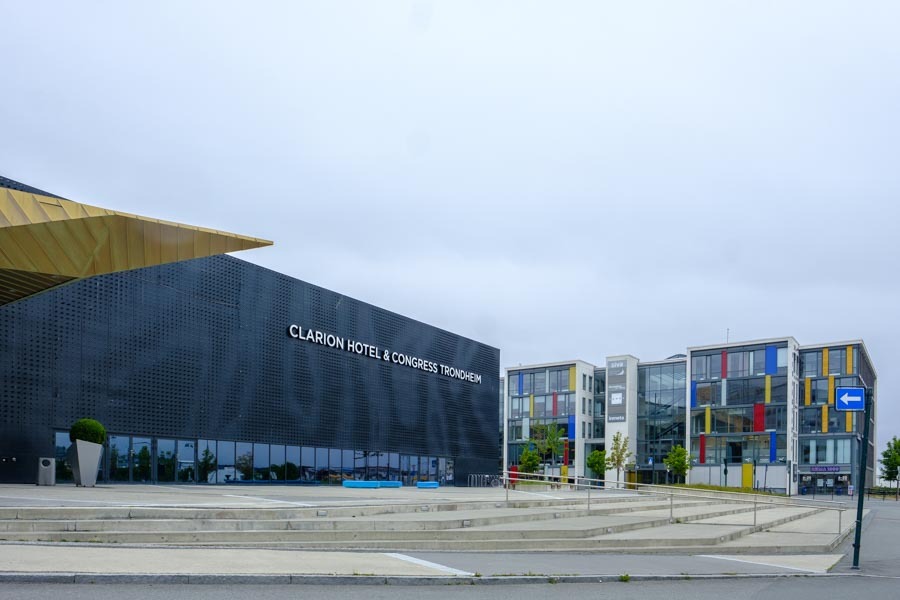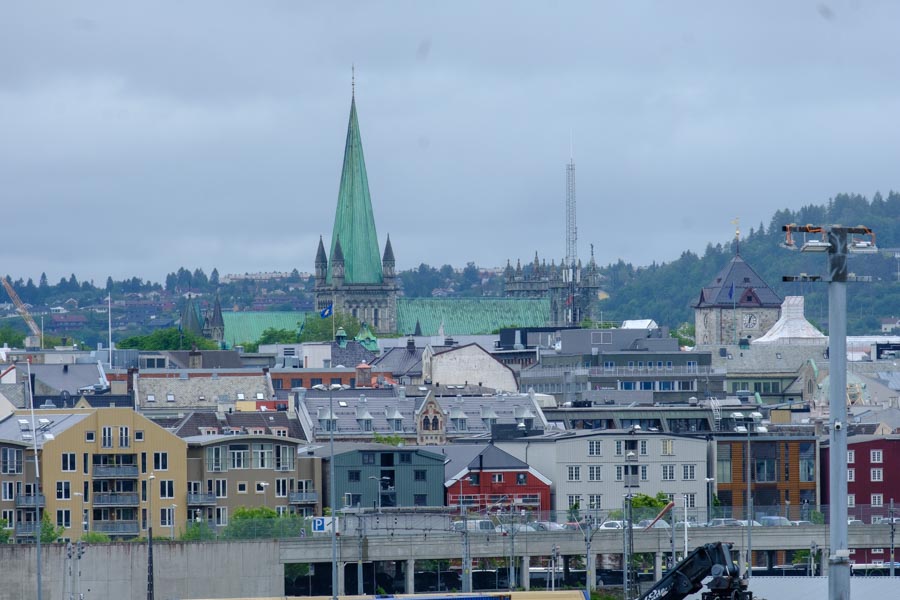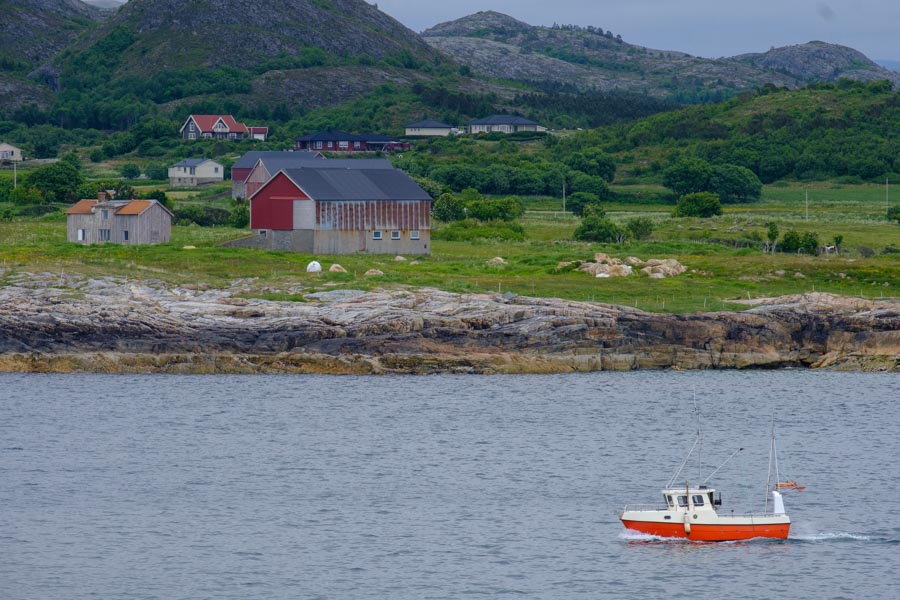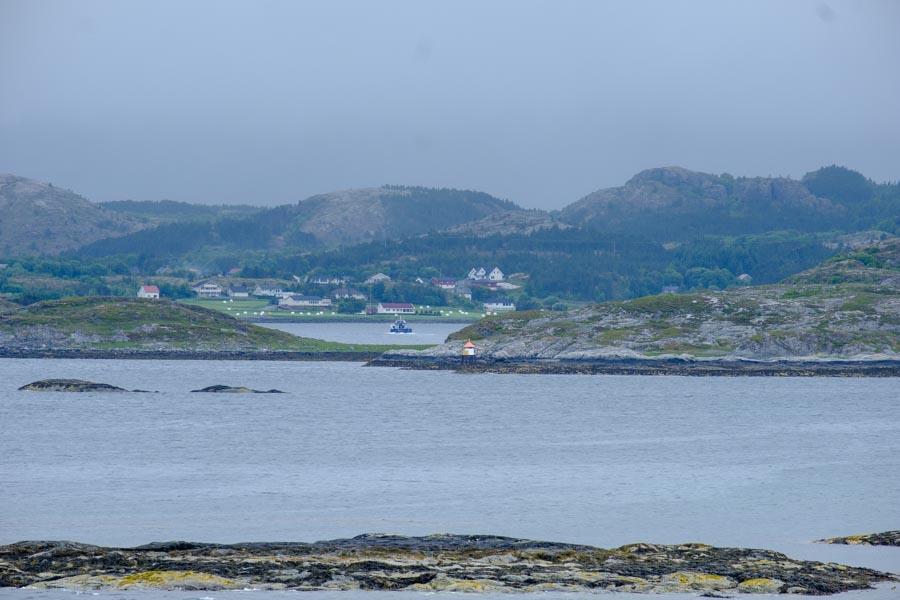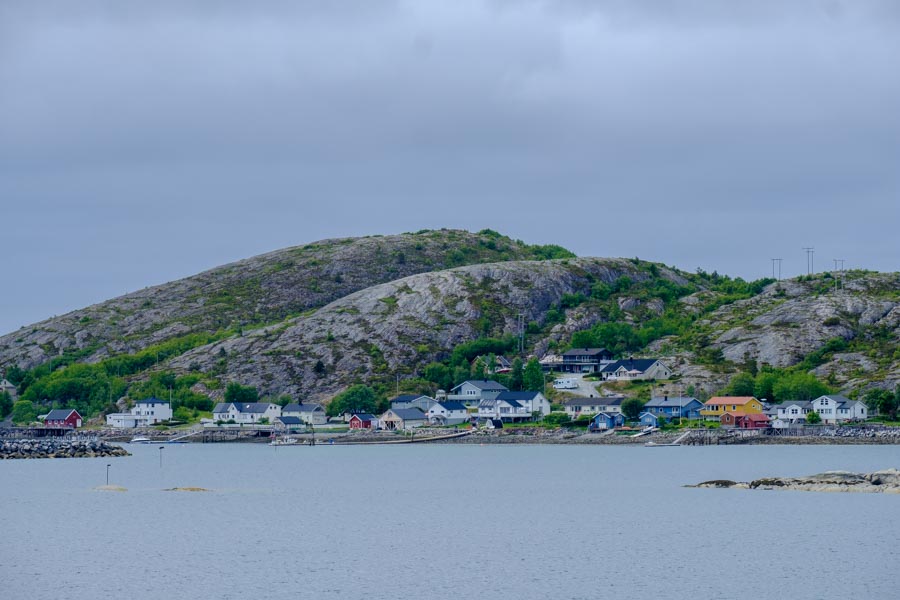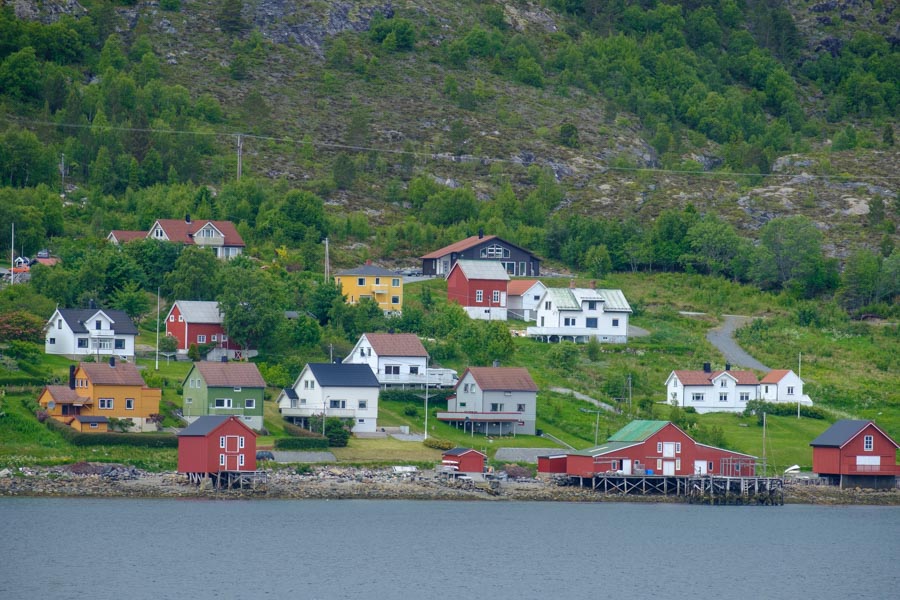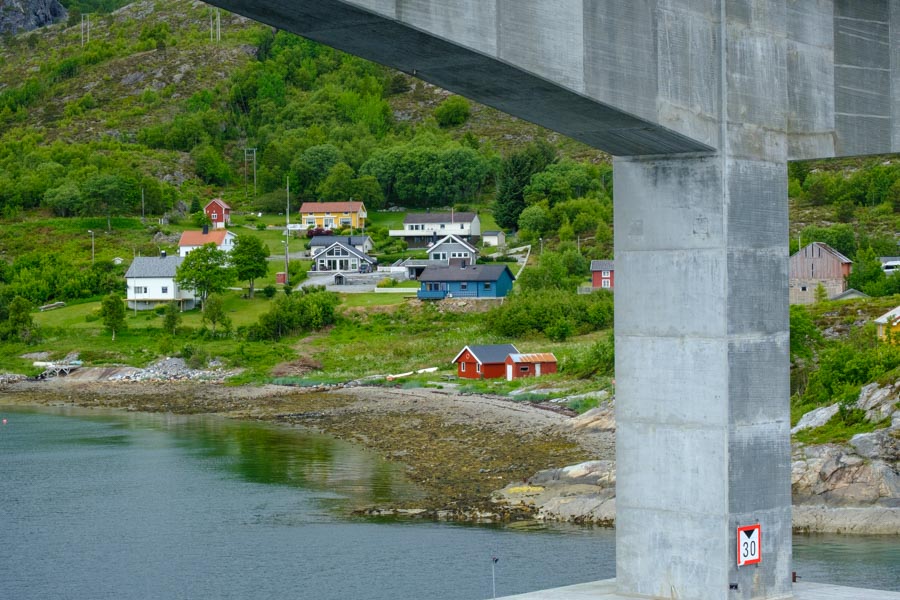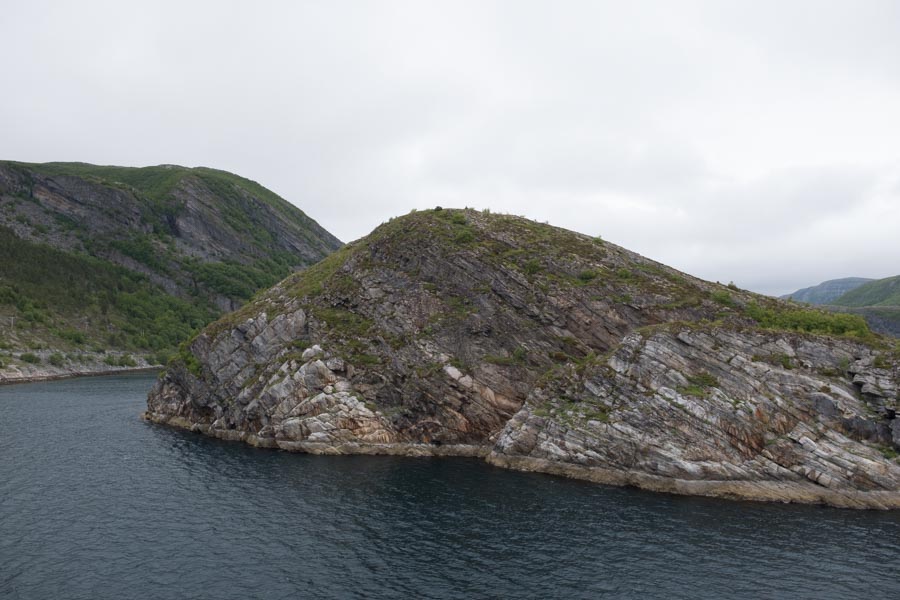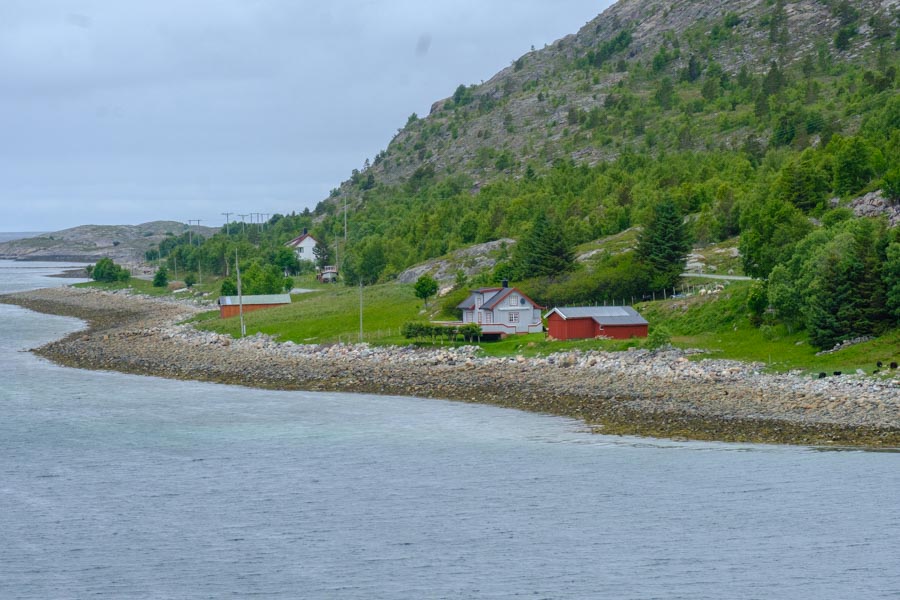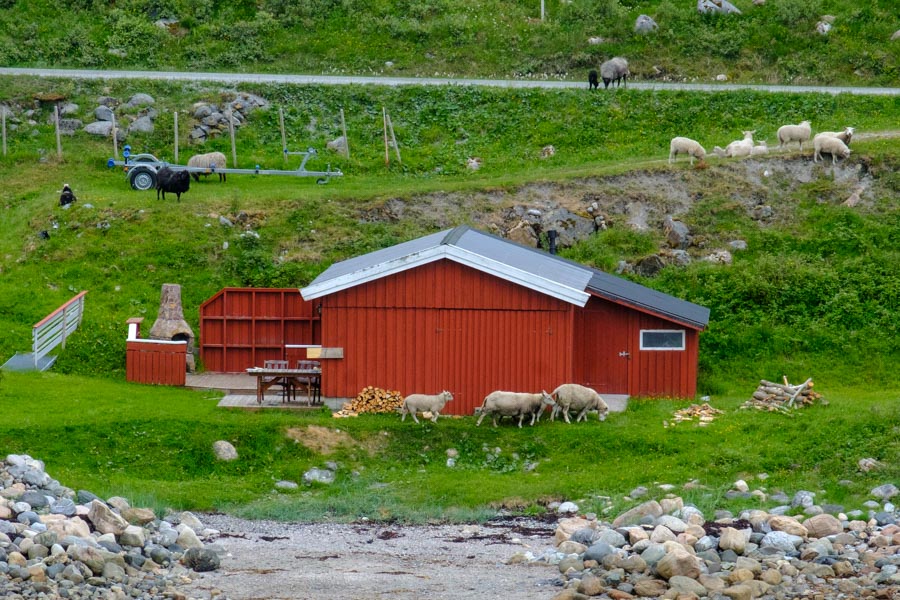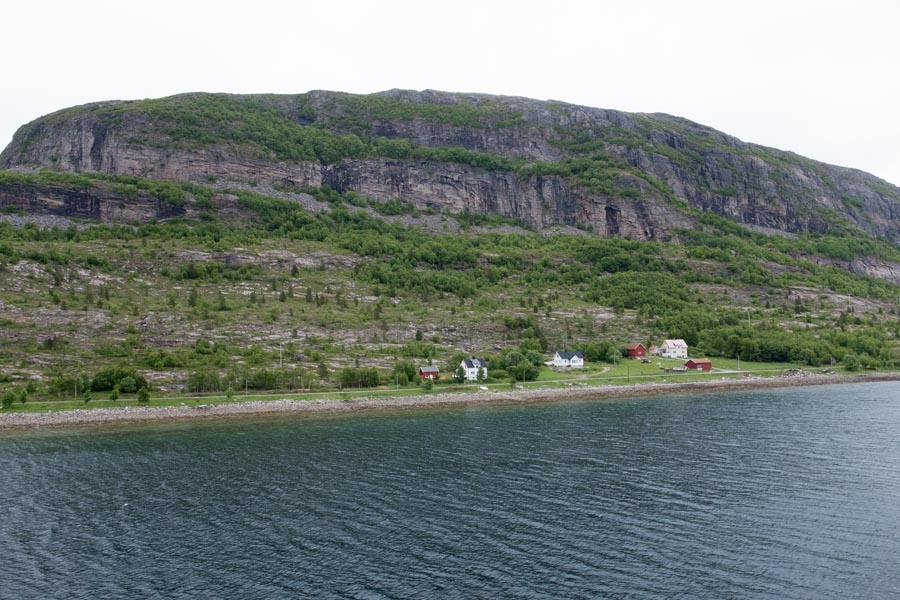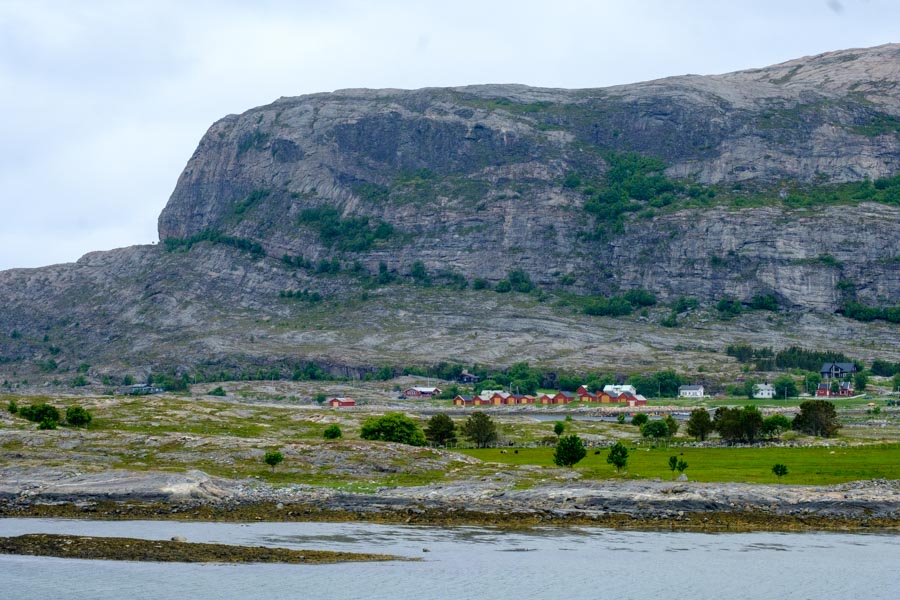This is a different way of cruising: rather than sailing all night and touring on land most of the day, Hurtigruten cruises just about all the time, stopping at each port for 15 to 45 minutes and then moving on to the next. Only once or twice a day do they stop long enough for on-land touring. The good news is that we’re hardly ever out of sight of land and often we’re literally a stone’s throw away from land or at least an outcropping. Being on deck is worthwhile just about all the time. And when it gets too cold you can always watch from your stateroom or one of several public areas.
Today we stopped for 3.5 hours in Trondheim. Many went on an organized tour; we went the unorganized route, wandering around by ourselves. The risk of do-it-yourself is getting lost and having to catch up to the ship on your own. They tell the story of a Brit last year who missed the boat and paid £1,000 to catch up.
Trondheim was for me a surprising city. Here we are nearing the Arctic Circle only to find a big, modern and seemingly prosperous city. It’s the third largest city in Norway with a population of 190,000. Lots of fancy (expensive) shops, lots of construction, several cruise boats in port. Maybe all that oil money being pumped out of the North Sea trickles down to Trondheim.
With only three hours we weren’t about to tackle the three or four museums in the guide book. We just did what any seasoned tourist does: walk through Old Town to the cathedral then walk down hill to your boat. Easy-peasy: old towns are always near the medieval cathedral, which has a tall pointy thing you can see from anywhere. And cruise ships are always at sea level so you have to walk downhill from cathedrals, which are always on top of a hill.
Refreshingly, Old Town Trondheim is mostly residential and quite pretty. It’s located along the Nidelva River with nice views. It took about a half hour to reach the cathedral.
The Nidaros Cathedral is a monster, a mix of Romanesque and Gothic. The first church on this site was built on St Olaf’s burial place around 1030. Recall that Olaf was a Viking who converted to Christianity in France. He died in battle fighting to gain or retain (depending on who you talk to) his crown. The Catholic bishops continually expanded the cathedral, usually after one of the regular fires that destroyed the place every 100 years or so. By the time of the Reformation it had reached its current size.
While the Lutherans took ownership of the cathedral after the bishop fled the country it seems that it wasn’t very well maintained. By the mid 1850s only a few stone walls remained standing. A committee was formed; work has been continual and today the structure is complete but work continues on stained glass.
Nidaros serves as Norway’s national church: kings and queens are crowned here. From what I can see it’s nondenominational. Services from a variety of faiths use it regularly. The waiting list for weddings is more than three years long.
Today has been cloudy with temps in the 50s. No one is working on a tan on the sun deck but everyone is enjoying the scenery as we sail through fjords. At some places the fjord is quite wide – Miles’s across; at others quite narrow – only 20 or 30 feet clearance. Thank goodness the walls of the fjord are steep; the captain doesn’t seem too worried about hidden rocks.
I forget where we land tomorrow and I’m too lazy to find the schedule. I do know that we’re doing an Arctic seashore walk and dinner with a real live VIKING (actor).
